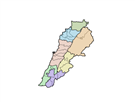[This is Part 4 of a translated transcription of a series of interviews conducted by the author with Leila Khaled during the summer of 2007. Click here to read the Introduction to the interview, here to read Part 1, here to read Part 2, and here to read Part 3]
After a brief training period in Jordan in 1969, I found myself in Lebanon meeting with Dr. Wadi Haddad. He asked me if I was ready to die. I replied that I was and asked why. He then told me that the real question is whether I was willing to spend the rest of my life in jail. I once again replied that I was and asked why. He then asked if I was ready to hijack a plane. Following the conversation and a training period, I left for Rome where I was to hijack a TWA flight bound for Tel Aviv.
This was another step for practicing the right of return. It was not the hijacking per se but rather the idea that I would fly over Palestine. To me, that was an amazing thought. It was a military operation but the highlight for me was being over Palestine. I could not believe myself. I even forgot that I was on a mission on a plane with an open hand grenade in my hand. I was wide-eyed and staring out the cockpit window.
I recall telling the flight crew and my comrade that below us was our country and this is the first time we see it. We wanted the traffic control person in the Lod airport to address us as the Popular Front to Free Arab Palestine. He was screaming and cursing at us. I cursed him back and informed him that Shadia Abu-Ghazaleh was coming from the sky, the land, and the sea.
The goal of the operation was the release of all prisoners. At the same time the hijacking was to put the Palestine question in the forefront internationally. We did not expect to get results from the hijacking itself but rather from the revolution the hijacking was a part of. I told the pilot to turn the plane around and head for Damascus but that he first needed to fly over Haifa. At that point I imagined my father smiling as he dreamt of returning to Palestine.
Click here to read the Introduction to the interview series.
Click here to read Part 1 of this interview.
Click here to read Part 2 of this interview.
Click here to read Part 3 of this interview.
![[Graffiti art depicting Leila Khaled. Image from unknown archive.]](https://kms.jadaliyya.com/Images/357x383xo/iamnotaterrorist.jpg)










